Vladimir Spokoiny
High-Dimensional Change Point Detection using Graph Spanning Ratio
Dec 08, 2025Abstract:Inspired by graph-based methodologies, we introduce a novel graph-spanning algorithm designed to identify changes in both offline and online data across low to high dimensions. This versatile approach is applicable to Euclidean and graph-structured data with unknown distributions, while maintaining control over error probabilities. Theoretically, we demonstrate that the algorithm achieves high detection power when the magnitude of the change surpasses the lower bound of the minimax separation rate, which scales on the order of $\sqrt{nd}$. Our method outperforms other techniques in terms of accuracy for both Gaussian and non-Gaussian data. Notably, it maintains strong detection power even with small observation windows, making it particularly effective for online environments where timely and precise change detection is critical.
Dimension-free bounds in high-dimensional linear regression via error-in-operator approach
Feb 21, 2025Abstract:We consider a problem of high-dimensional linear regression with random design. We suggest a novel approach referred to as error-in-operator which does not estimate the design covariance $\Sigma$ directly but incorporates it into empirical risk minimization. We provide an expansion of the excess prediction risk and derive non-asymptotic dimension-free bounds on the leading term and the remainder. This helps us to show that auxiliary variables do not increase the effective dimension of the problem, provided that parameters of the procedure are tuned properly. We also discuss computational aspects of our method and illustrate its performance with numerical experiments.
High dimensional change-point detection: a complete graph approach
Mar 16, 2022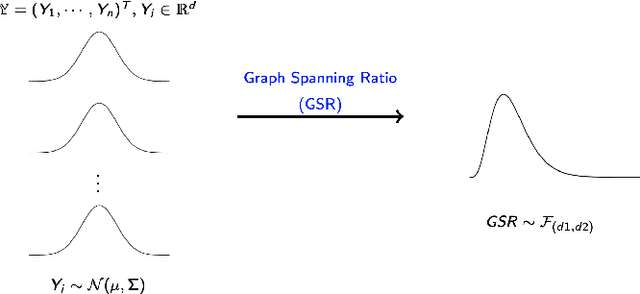
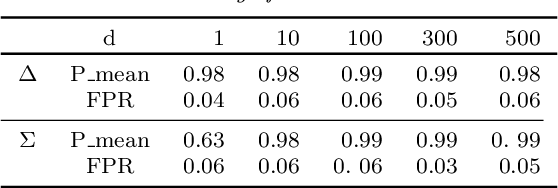
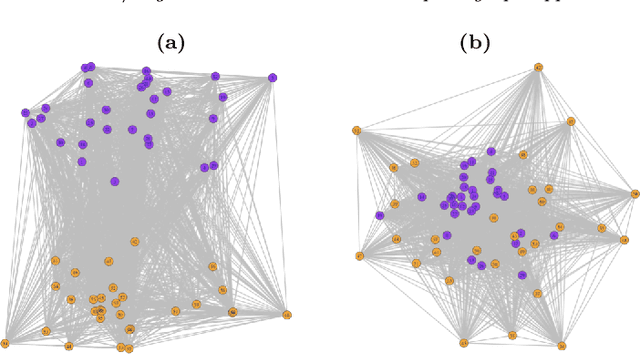
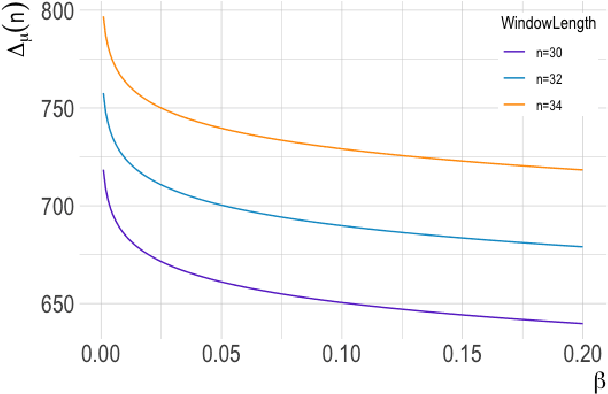
Abstract:The aim of online change-point detection is for a accurate, timely discovery of structural breaks. As data dimension outgrows the number of data in observation, online detection becomes challenging. Existing methods typically test only the change of mean, which omit the practical aspect of change of variance. We propose a complete graph-based, change-point detection algorithm to detect change of mean and variance from low to high-dimensional online data with a variable scanning window. Inspired by complete graph structure, we introduce graph-spanning ratios to map high-dimensional data into metrics, and then test statistically if a change of mean or change of variance occurs. Theoretical study shows that our approach has the desirable pivotal property and is powerful with prescribed error probabilities. We demonstrate that this framework outperforms other methods in terms of detection power. Our approach has high detection power with small and multiple scanning window, which allows timely detection of change-point in the online setting. Finally, we applied the method to financial data to detect change-points in S&P 500 stocks.
Reinforced optimal control
Nov 24, 2020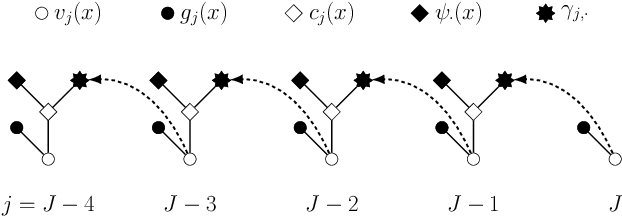
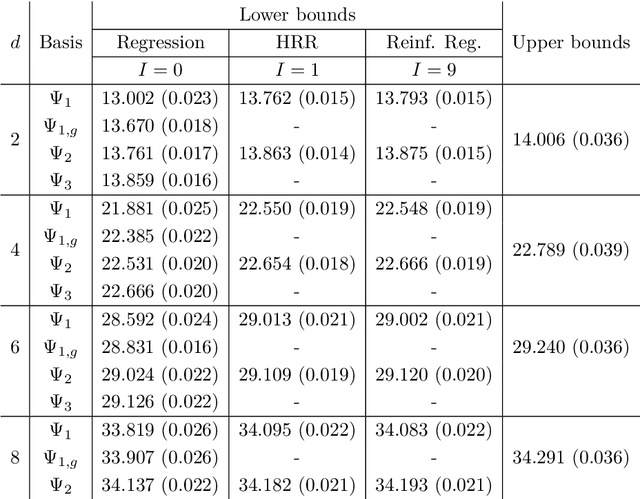
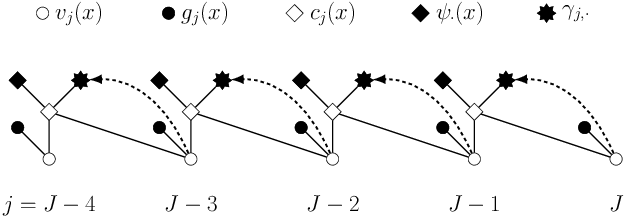

Abstract:Least squares Monte Carlo methods are a popular numerical approximation method for solving stochastic control problems. Based on dynamic programming, their key feature is the approximation of the conditional expectation of future rewards by linear least squares regression. Hence, the choice of basis functions is crucial for the accuracy of the method. Earlier work by some of us [Belomestny, Schoenmakers, Spokoiny, Zharkynbay. Commun.~Math.~Sci., 18(1):109-121, 2020] proposes to \emph{reinforce} the basis functions in the case of optimal stopping problems by already computed value functions for later times, thereby considerably improving the accuracy with limited additional computational cost. We extend the reinforced regression method to a general class of stochastic control problems, while considerably improving the method's efficiency, as demonstrated by substantial numerical examples as well as theoretical analysis.
Structure-adaptive manifold estimation
Jun 19, 2019



Abstract:We consider a problem of manifold estimation from noisy observations. We suggest a novel adaptive procedure, which simultaneously reconstructs a smooth manifold from the observations and estimates projectors onto the tangent spaces. Many manifold learning procedures locally approximate a manifold by a weighted average over a small neighborhood. However, in the presence of large noise, the assigned weights become so corrupted that the averaged estimate shows very poor performance. We adjust the weights so they capture the manifold structure better. We propose a computationally efficient procedure, which iteratively refines the weights on each step, such that, after several iterations, we obtain the "oracle" weights, so the quality of the final estimates does not suffer even in the presence of relatively large noise. We also provide a theoretical study of the procedure and prove its optimality deriving both new upper and lower bounds for manifold estimation under the Hausdorff loss.
Optimal stopping via reinforced regression
Oct 26, 2018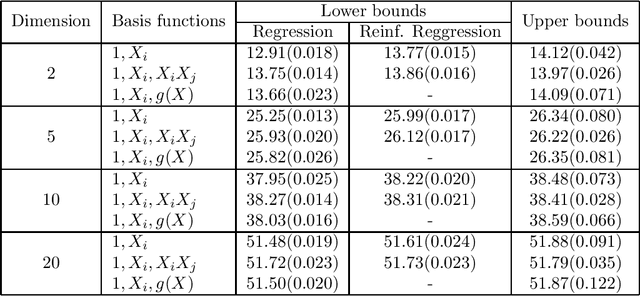
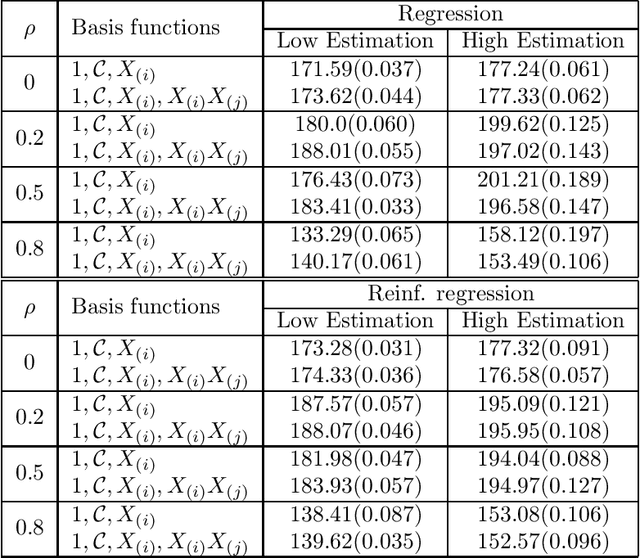
Abstract:In this note we propose a new approach towards solving numerically optimal stopping problems via reinforced regression based Monte Carlo algorithms. The main idea of the method is to reinforce standard linear regression algorithms in each backward induction step by adding new basis functions based on previously estimated continuation values. The proposed methodology is illustrated by a numerical example from mathematical finance.
Pointwise adaptation via stagewise aggregation of local estimates for multiclass classification
Apr 08, 2018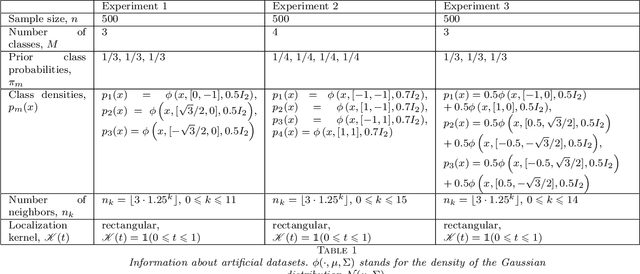


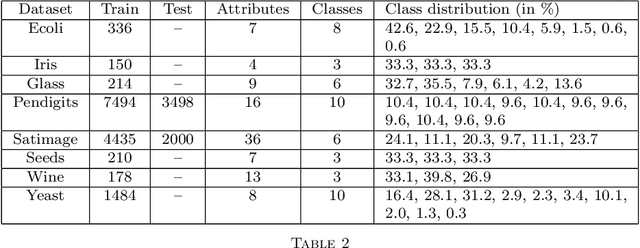
Abstract:We consider a problem of multiclass classification, where the training sample $S_n = \{(X_i, Y_i)\}_{i=1}^n$ is generated from the model $\mathbb p(Y = m | X = x) = \theta_m(x)$, $1 \leq m \leq M$, and $\theta_1(x), \dots, \theta_M(x)$ are unknown Lipschitz functions. Given a test point $X$, our goal is to estimate $\theta_1(X), \dots, \theta_M(X)$. An approach based on nonparametric smoothing uses a localization technique, i.e. the weight of observation $(X_i, Y_i)$ depends on the distance between $X_i$ and $X$. However, local estimates strongly depend on localizing scheme. In our solution we fix several schemes $W_1, \dots, W_K$, compute corresponding local estimates $\widetilde\theta^{(1)}, \dots, \widetilde\theta^{(K)}$ for each of them and apply an aggregation procedure. We propose an algorithm, which constructs a convex combination of the estimates $\widetilde\theta^{(1)}, \dots, \widetilde\theta^{(K)}$ such that the aggregated estimate behaves approximately as well as the best one from the collection $\widetilde\theta^{(1)}, \dots, \widetilde\theta^{(K)}$. We also study theoretical properties of the procedure, prove oracle results and establish rates of convergence under mild assumptions.
Adaptive Nonparametric Clustering
Sep 26, 2017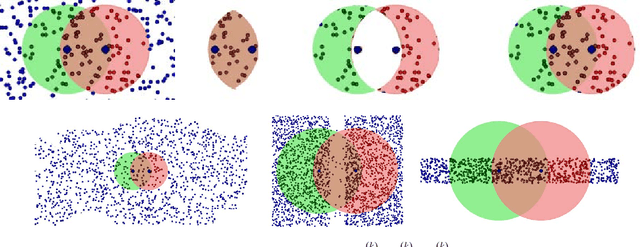



Abstract:This paper presents a new approach to non-parametric cluster analysis called Adaptive Weights Clustering (AWC). The idea is to identify the clustering structure by checking at different points and for different scales on departure from local homogeneity. The proposed procedure describes the clustering structure in terms of weights \( w_{ij} \) each of them measures the degree of local inhomogeneity for two neighbor local clusters using statistical tests of "no gap" between them. % The procedure starts from very local scale, then the parameter of locality grows by some factor at each step. The method is fully adaptive and does not require to specify the number of clusters or their structure. The clustering results are not sensitive to noise and outliers, the procedure is able to recover different clusters with sharp edges or manifold structure. The method is scalable and computationally feasible. An intensive numerical study shows a state-of-the-art performance of the method in various artificial examples and applications to text data. Our theoretical study states optimal sensitivity of AWC to local inhomogeneity.
Sparse Non Gaussian Component Analysis by Semidefinite Programming
Jan 13, 2012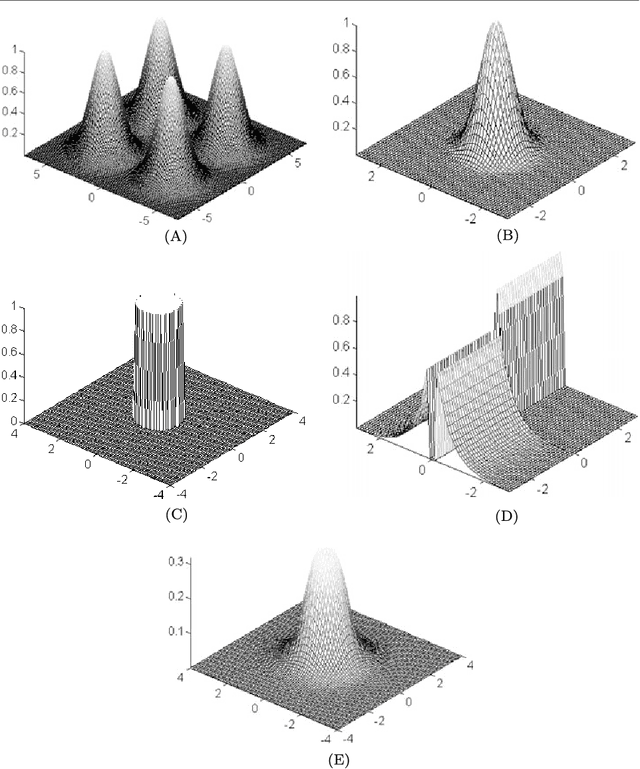
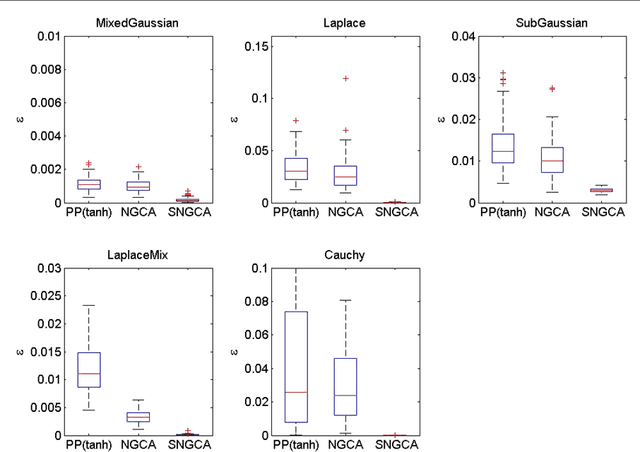
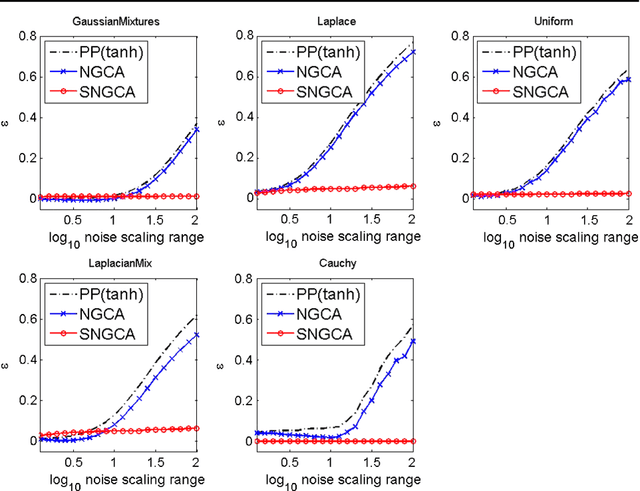
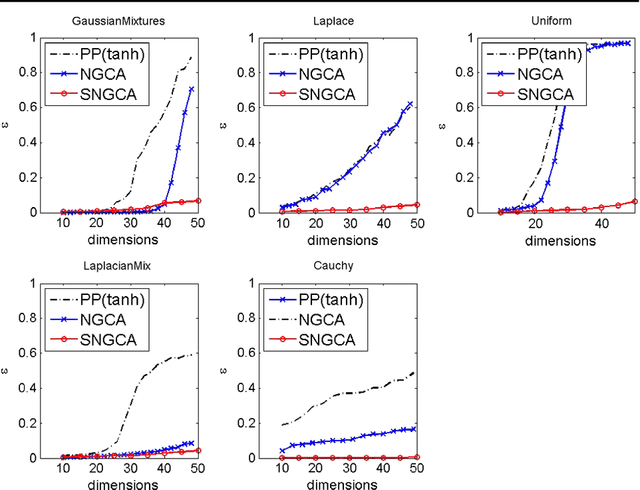
Abstract:Sparse non-Gaussian component analysis (SNGCA) is an unsupervised method of extracting a linear structure from a high dimensional data based on estimating a low-dimensional non-Gaussian data component. In this paper we discuss a new approach to direct estimation of the projector on the target space based on semidefinite programming which improves the method sensitivity to a broad variety of deviations from normality. We also discuss the procedures which allows to recover the structure when its effective dimension is unknown.
 Add to Chrome
Add to Chrome Add to Firefox
Add to Firefox Add to Edge
Add to Edge